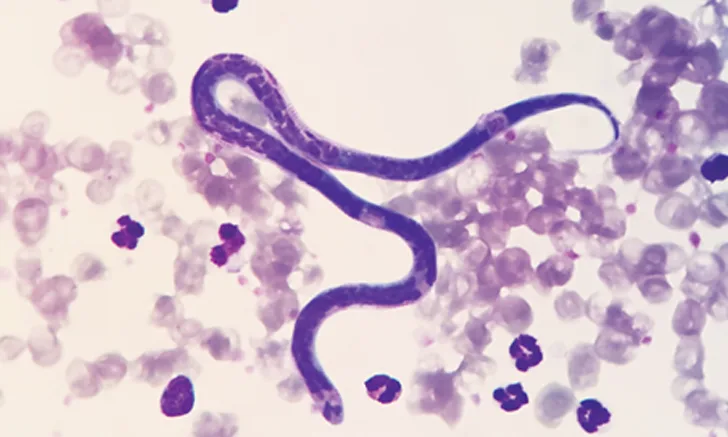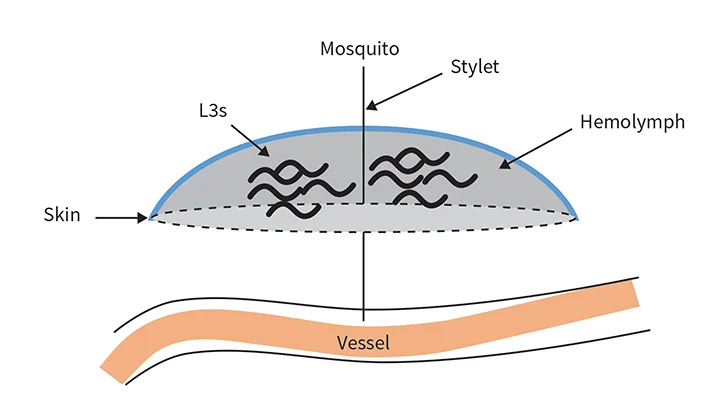Canine Heartworm
Andrew R. Moorhead, DVM, MS, PhD, DACVM (Parasitology), University of Georgia

Dirofilaria immitis (ie, canine heartworm), a potentially deadly disease, is arguably the most important parasite that affects dogs in North America, with ≈100,000 new cases reported annually.1 It is thus important that all clinicians (including those in historically nonendemic regions) be knowledgeable regarding the heartworm life cycle, as this will allow for better understanding of treatment and prevention strategies.
Life Cycle
Adult female heartworms can grow to a length of 10 to 12 inches; male heartworms typically reach 4 to 6 inches. Adult worms can live up to 5 to 7 years in dogs, where they mate and produce microfilariae (>300 µm in length) that circulate in the blood. Microfilariae are then ingested by an intermediate mosquito host—this is essential for heartworm development—in which they migrate for an average period of ≈14 days and develop to first-stage larvae (L1). The L1 then molt twice and become infectious third-stage larvae (L3) that are ≈1 mm in length and exist in the head of the mosquito. The ambient temperature must be >57.2°F (14°C) for larval development in the mosquito.2 When the mosquito lands and takes a blood meal, the L3 emerge from the proboscis (ie, mosquito mouthparts) and surround the stylet (ie, piercing part of the proboscis) in a pool of mosquito hemolymph (Figure). When the stylet is removed, the larvae enter the host through the hole created by the stylet. This process is in contrast to the commonly held belief that larvae are injected by the mosquito into the definitive host.3
Once inside the definitive host, the larvae follow a complicated migration pathway. The L3 remain at the site of entrance for ≈3 to 4 days; during which time they molt to fourth-stage larvae (L4). Molting is usually completed within 4 days but may not occur until day 12.3 L4 typically molt to the last stage (ie, juvenile adults) between day 50 to 58, then migrate through the subcutaneous tissue and musculature.4 Worms begin arriving in the pulmonary artery (ie, the final location) by days 67 to 704,5; most worms reach this location by day 120. By day 180, worms are sexually mature and begin to produce microfilariae; thus, completing the life cycle.4 This timeline can vary.

L3 in a hemolymph pool, with the mosquito stylet still inserted in the definitive host
Trusted content.
Tailored to you.
For free.
Create an account for free.
Want free access to the #1 publication for diagnostic and treatment information? Create a free account to read full articles and access web-exclusive content on cliniciansbrief.com.